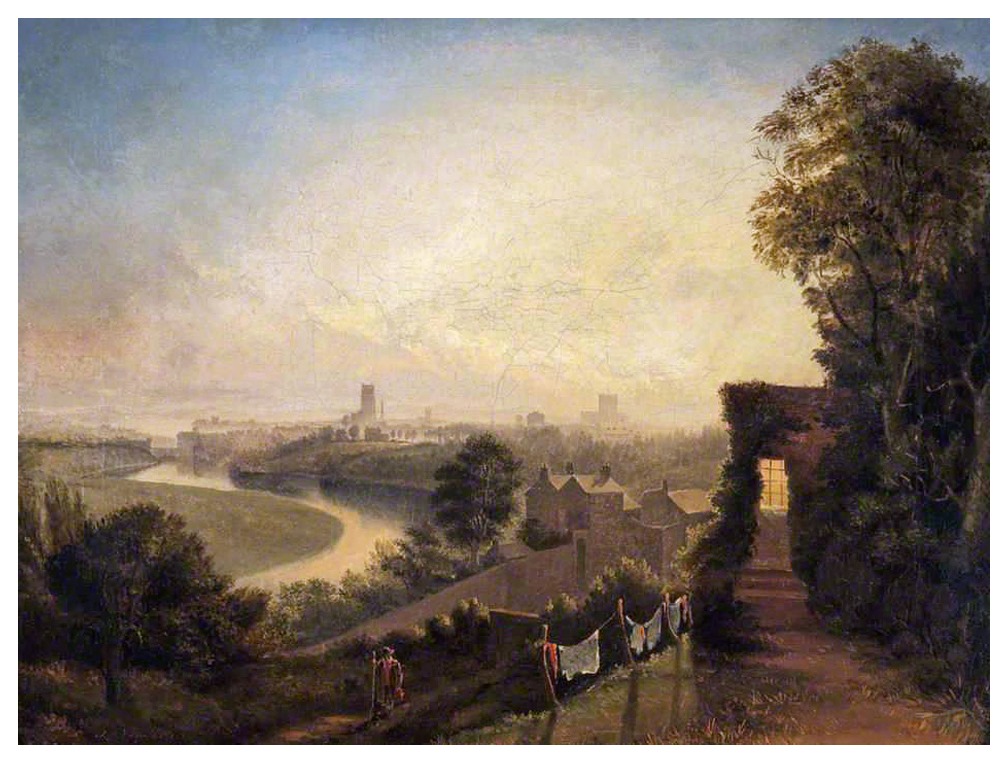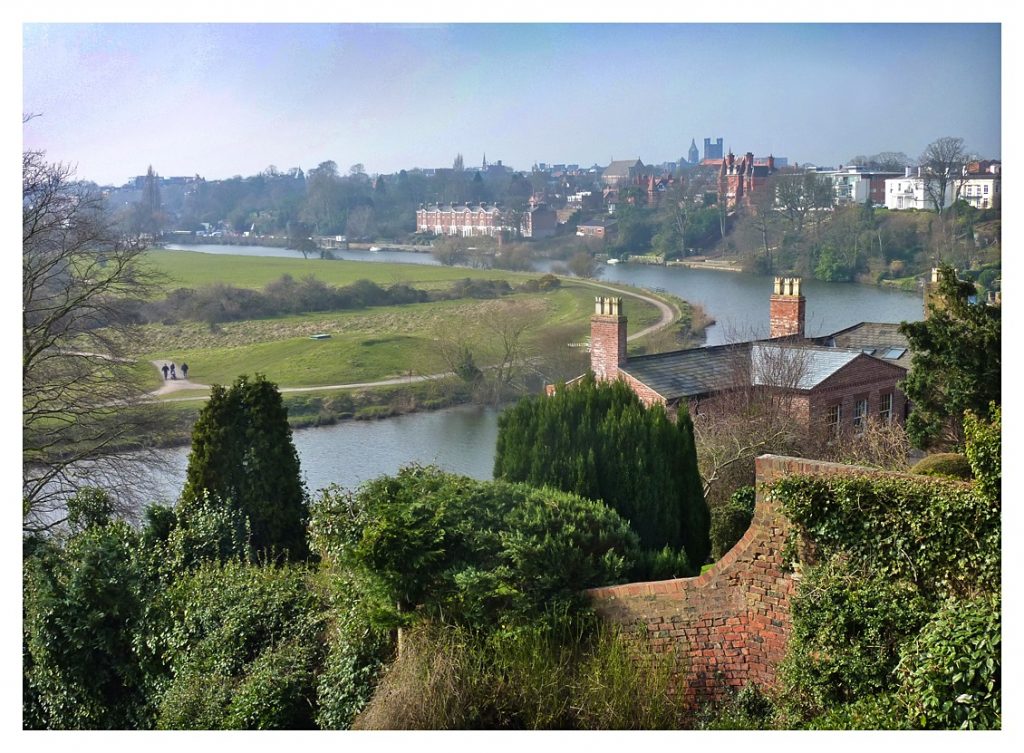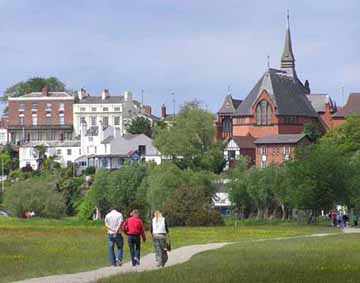One of my favourite walks in Chester, before the lockdown, was to take the riverside path that follows the west bank of the Dee all the way from the city centre out to the village of Eccleston. Here there was once a ferry that took passengers over to the east bank of the river. The walk is about three miles in length and takes you through the Meadows, an expanse of river-mud enriched pastureland long used by the people of Chester for grazing cows and sheep.
On the opposite bank to the Meadows, perched on top of a steep cliff, is the old village of Spital Boughton, now an upmarket Chester suburb. I had a friend once who knew the area well and often walked its streets and passageways, compulsively drawn by its accumulated images of past violence and suffering, the dark secrets beneath the façade of handsome Victorian villas: echoes of an earlier, less polite, era. Memories belonging to other souls would spool through her mind when she walked here, she said. Family memories, folk memories. Remembrance soaked into the very earth beneath her feet.
Once a riverside village, Spital Boughton is now swallowed up by Chester. But, in its character, it is still not quite part of the city. It sits, barely one square mile of linear settlement, bounded on one side by the River Dee and on the other by an eastbound branch of Watling Street that once led, ultimately, to York. Ranulph, then Earl of Chester, founded a leper hospital here in the early twelfth century, choosing an elevated site just outside the city walls, a place now called The Mount.
The hospital, which was called Sigillum Infirmorum De Cestrie, had a chapel dedicated to St Giles and a graveyard for lepers and paupers, now abandoned. The hospital and graveyard were used once more during the plagues of the sixteenth and seventeenth centuries before being finally closed down and destroyed during the Civil War. It’s memory lives on in the ‘spital’ place name.
You cannot see The Mount from the Meadows, but you can easily pinpoint its location, as it is marked by the soaring spire of St Paul’s church which rises high above the surrounding houses at the top of the bank.
Next to the site of the hospital, on a road now called Barrel Well Hill, is the site of Chester’s Gallows Hill. No amount of name changing can remove its malign influence; perhaps it’s just my imagination, but I swear I can even feel it from the opposite bank. Countless of the city’s accused met their end here, their last view of this world being the wide sweep of the Dee and the Meadows beyond. Ellen Beach, Anne Osboston and Anne Thornton, three alleged witches were hung here in 1656, all of them pleading their innocence until the end. This was a time when old women who lived alone and considered a bit eccentric or young women who were deemed to be too independent-minded, were often scapegoated as witches. A shameful tradition carried on by some in our society today, people who try to blame refugees and migrants for our country’s ills.
There is a memorial here to John Plessington, a Catholic priest martyred by being hung, drawn and quartered on Gallows Hill in 1679. In the same place a Protestant clergyman, George March, was burnt at the stake in 1555. My friend, though not a believer, told me she once felt moved to pray on this spot for the souls of Plessington, Marsh, the three alleged witches and all the others executed here. Requiesent in pace.
Picture Credits
- Chester: a Virtual Stroll Around the Walls
- Chester: a Virtual Stroll Around the Walls
- Chester: a Virtual Stroll Around the Walls




Interesting post, Bobby. I spent a year just over the border in N. Wales many years ago, and often visited Chester – such an attractive town. Like so many, it has dark corners, as you point out. As I’m now in Cornwall I’m able to visit Exeter occasionally. By the ruins of the castle gatehouse there’s a plaque bearing the story of – guess what? – three witches hanged there in 1682 and 1685. It also says they were arrested as a result of malicious stories about them. They’re also said to be the last women to be executed in England for witchcraft. There’s a link here to the wording and background, in case you’re interested:
https://www.exetercivicsociety.org.uk/plaques/devon-witches/
I love the diversity of your writing Bobby. Never know where we will end up next!
Thanks Mark. It surprises me sometimes too!